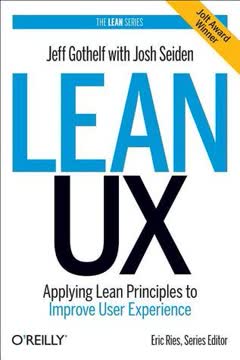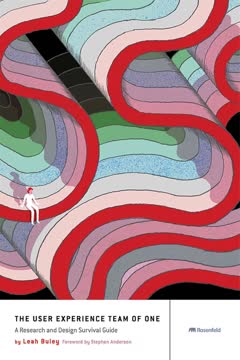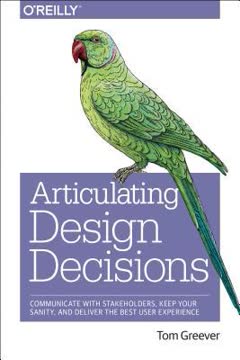Key Takeaways
1. UX research is about observing behavior, not collecting opinions
"Pay attention to what people do, not to what they say."
Behavior trumps opinion. UX research focuses on observing real user actions rather than relying on stated preferences or hypothetical scenarios. This approach yields more reliable insights because people often struggle to accurately predict or articulate their own behavior.
Key reasons to prioritize behavioral observation:
- People have poor insight into their own decision-making processes
- Stated preferences often differ from actual choices in real-world situations
- Observing actions reveals unmet needs and pain points that users may not consciously recognize
By focusing on behavior, UX researchers can uncover genuine user needs and design solutions that address real-world usage patterns, rather than catering to potentially misleading self-reported preferences.
2. Effective UX research requires a deep understanding of users' contexts
"Context is like a skeleton key for unlocking user needs — which in turn leads to new feature and product ideas."
Context shapes behavior. Understanding the environment in which users interact with a product is crucial for designing effective solutions. This includes physical, social, and technological factors that influence user actions and decisions.
Key aspects of user context to consider:
- Physical environment (e.g., office, home, mobile)
- Social dynamics (e.g., collaborative work, personal use)
- Technological ecosystem (e.g., devices, software, connectivity)
- Time constraints and frequency of use
- Emotional and motivational factors
By immersing themselves in users' contexts through methods like field studies and contextual inquiry, UX researchers can gain rich insights that inform more relevant and impactful design decisions.
3. Iterative design and testing are crucial for creating innovative products
"You'll never iterate toward a transformative solution. If you start with a website and iterate, you'll end with a website."
Innovation requires exploration. While iterative design is valuable for refining existing solutions, true innovation often requires a more expansive approach that questions fundamental assumptions and explores entirely new directions.
Steps to foster innovation in UX research:
- Start with user needs, not preconceived solutions
- Explore a wide range of potential solutions early in the process
- Use rapid prototyping to test diverse concepts
- Embrace failure as a learning opportunity
- Continuously validate assumptions through user testing
By combining iterative refinement with periods of divergent thinking and radical exploration, UX researchers can help teams break free from incremental improvements and create truly transformative products.
4. UX researchers must balance technical skills with process and marketing abilities
"Technical expertise is a small component in making user experience happen. Technical expertise is what gets you in the door, but it's not what makes a great practitioner."
Holistic skill set required. While technical proficiency in research methods is essential, successful UX researchers must also excel in project management, communication, and strategic thinking to drive meaningful change within organizations.
Key non-technical skills for UX researchers:
- Active listening and stakeholder management
- Effective communication of research findings
- Project planning and execution
- Persuasion and change management
- Business acumen and strategic thinking
By developing a well-rounded skill set that encompasses technical expertise, process management, and marketing abilities, UX researchers can more effectively influence decision-making and ensure their insights translate into tangible improvements in product design.
5. Usability testing should focus on finding problems, not validating designs
"Usability testing isn't about finding out what users like, but rather what works best for them."
Identify pain points. The primary goal of usability testing is to uncover issues that hinder user performance or satisfaction, rather than seeking validation for existing design choices. This problem-focused approach leads to more actionable insights and meaningful improvements.
Key principles for effective usability testing:
- Prioritize task completion and user goals over subjective preferences
- Observe user behavior rather than relying on self-reported opinions
- Focus on identifying and prioritizing usability issues
- Use both qualitative and quantitative measures to assess performance
- Iterate based on findings, rather than seeking to confirm preconceptions
By maintaining a critical, problem-solving mindset throughout the testing process, UX researchers can help teams identify and address the most impactful usability issues, leading to significant improvements in overall user experience.
6. Effective communication of UX research findings is key to driving action
"No presentation will be more persuasive than having the development team observe users as they do their tasks."
Make insights actionable. The value of UX research lies not just in gathering data, but in effectively communicating findings to stakeholders in a way that drives meaningful change. This often requires going beyond traditional reports to create engaging, persuasive presentations of research insights.
Strategies for impactful research communication:
- Use visual storytelling techniques (e.g., journey maps, personas)
- Create concise, visually appealing research summaries
- Involve stakeholders in observing user sessions firsthand
- Frame findings in terms of business impact and user goals
- Provide clear, prioritized recommendations for action
By focusing on effective communication and stakeholder engagement, UX researchers can ensure their insights translate into tangible improvements in product design and user experience.
7. UX research methods should be tailored to the specific project needs
"Your choice of method depends on where you are in your development lifecycle."
Adapt to context. Different stages of product development and types of research questions require different methodological approaches. UX researchers must be flexible in selecting and adapting research methods to meet the specific needs of each project.
Factors to consider when choosing research methods:
- Stage of product development (e.g., discovery, design, evaluation)
- Research objectives (e.g., understanding user needs, evaluating usability)
- Available resources (e.g., time, budget, access to users)
- Stakeholder expectations and organizational culture
- Desired level of depth vs. breadth in insights
By tailoring research methods to the unique context and goals of each project, UX researchers can maximize the impact and efficiency of their work, delivering more valuable insights to inform design decisions.
8. Building a user-centered culture requires continuous exposure to users
"The most effective development teams have a two-hour dose of exposure to users every six weeks."
Foster empathy through interaction. Regular, direct contact with users is essential for building and maintaining a user-centered design culture within organizations. This ongoing exposure helps team members develop empathy, challenge assumptions, and make more informed design decisions.
Strategies for increasing user exposure:
- Schedule regular usability testing sessions with team observation
- Conduct periodic field studies and site visits
- Implement "exposure hours" targets for team members
- Share user stories and feedback in team meetings
- Create artifacts (e.g., personas, journey maps) to keep users top-of-mind
By prioritizing continuous user exposure across the organization, UX researchers can help foster a more empathetic, user-centered approach to product development that leads to better outcomes for both users and the business.
9. UX metrics provide valuable insights for design decisions and progress tracking
"UX metrics provide a way for you to see how your current design measures up to what your users (and the business) needs."
Quantify user experience. Establishing clear, measurable UX metrics allows teams to objectively assess the impact of design changes, track progress over time, and make data-driven decisions about product improvements.
Key considerations for UX metrics:
- Align metrics with both user needs and business goals
- Focus on a balanced set of measures (e.g., effectiveness, efficiency, satisfaction)
- Use both task-based and overall experience metrics
- Establish baselines and set realistic improvement targets
- Regularly review and update metrics as product and user needs evolve
By incorporating well-defined UX metrics into the design process, researchers can provide tangible evidence of the value of user-centered design and guide teams towards continuous improvement in user experience.
10. A strong UX portfolio showcases research processes, not just deliverables
"If you're a UX researcher, you don't design screens. You design experiences."
Demonstrate problem-solving. An effective UX research portfolio should focus on illustrating the researcher's approach to understanding and solving user experience challenges, rather than simply presenting final deliverables or visual designs.
Key elements of a strong UX research portfolio:
- Clear articulation of research questions and business objectives
- Explanation of methodology choices and rationale
- Demonstration of analytical and problem-solving skills
- Examples of how research insights influenced design decisions
- Reflection on lessons learned and areas for improvement
- Measurable impact of research on user experience and business outcomes
By crafting a portfolio that showcases the full research process and its impact on design outcomes, UX researchers can more effectively communicate their value to potential employers and clients, highlighting their ability to drive meaningful improvements in user experience through rigorous research and analysis.
Last updated:
FAQ
What's Think Like a UX Researcher about?
- User Experience Focus: The book emphasizes understanding users' needs, behaviors, and motivations to create effective designs. It provides practical insights into conducting UX research.
- Research Techniques: It covers methods like field visits, usability testing, and design ethnography, advocating for a user-centered approach throughout the design process.
- Iterative Design: Highlights the importance of iterative design and testing, encouraging continuous refinement of products based on user feedback.
Why should I read Think Like a UX Researcher?
- Practical Guidance: Offers actionable advice and techniques for UX research and design projects, suitable for both beginners and experienced practitioners.
- Avoid Common Pitfalls: Helps readers recognize and avoid common mistakes in UX research, such as over-reliance on demographic data.
- Enhance User-Centered Culture: Aids in fostering a user-centered culture within organizations, leading to better product outcomes and customer satisfaction.
What are the key takeaways of Think Like a UX Researcher?
- User-Centric Approach: Prioritize understanding users over assumptions about their needs. The book states, “The best predictor of future behavior is past behavior.”
- Iterative Testing: Emphasizes iterative design and testing to refine products based on real user feedback, aligning with the Lean Startup methodology.
- Diverse Research Methods: Encourages using various research methods, including design ethnography and usability testing, for comprehensive user insights.
What are the best quotes from Think Like a UX Researcher and what do they mean?
- Five Participants Quote: “Five participants are all you need to get 85% of the usability problems.” This highlights that while five participants can uncover many issues, they may not represent all usability problems.
- Customer Conversations Quote: “Trying to learn from customer conversations is like excavating a delicate archaeological site.” This metaphor suggests that observing user behavior is often more revealing than direct questioning.
- Solution Quote: “The solution must alleviate some pain.” This underscores the importance of understanding user problems before jumping to solutions.
How does Think Like a UX Researcher describe design ethnography?
- Understanding User Context: Design ethnography involves observing users in their natural environments to gain insights into their behaviors and needs.
- Avoiding Assumptions: Emphasizes that asking users what they want often leads to unreliable data; observing actual behaviors uncovers true needs.
- Practical Application: Combines traditional ethnographic methods with a focus on design insights, allowing for quick and effective data gathering.
What are some best practices for conducting UX research mentioned in Think Like a UX Researcher?
- Define Clear Objectives: Essential to define clear objectives and questions before starting research to focus efforts and select appropriate methods.
- Engage Stakeholders Early: Involving stakeholders from the beginning ensures their needs are addressed and increases the likelihood of findings being acted upon.
- Use Multiple Methods: Advocates for using a combination of qualitative and quantitative methods to gather comprehensive insights, enhancing data validity.
How does Think Like a UX Researcher suggest prioritizing usability problems?
- Severity Levels: Introduces a decision tree for classifying usability problems into severity levels: critical, serious, medium, and low.
- Impact Assessment: Emphasizes assessing the impact of problems on user tasks and satisfaction, prioritizing those that hinder task completion.
- User Feedback: Gathering user feedback during tests is essential for understanding which problems are most pressing.
What role do personas play in UX research according to Think Like a UX Researcher?
- User Representation: Personas are fictional characters based on research to represent different user types, helping teams empathize with users.
- Guiding Design Decisions: Personas guide design decisions by providing context for user goals and motivations, ensuring a user-centered process.
- Dynamic Tools: Suggests treating personas as dynamic tools that evolve with new insights, keeping them relevant throughout the design process.
How can I effectively communicate UX research findings to stakeholders according to Think Like a UX Researcher?
- Clear and Concise Reporting: Create reports that highlight key findings and actionable insights, avoiding overwhelming stakeholders with excessive detail.
- Visual Aids: Use charts and infographics to convey complex data in an easily digestible format, enhancing understanding and retention.
- Engaging Presentations: Focus on storytelling to engage stakeholders emotionally, relating findings back to user experiences for relatability.
What is the significance of the "Baloney Detection Kit" in Think Like a UX Researcher?
- Critical Thinking Framework: Provides a framework for evaluating claims and arguments critically, encouraging researchers to question assumptions.
- Avoiding Bias: Helps UX researchers avoid biases and make informed decisions based on data rather than opinions.
- Enhancing Research Quality: Identifies weak arguments and unsupported claims, improving the overall quality of research and leading to reliable insights.
How does Think Like a UX Researcher address the iterative design process?
- Continuous User Feedback: Emphasizes incorporating user feedback at every design stage, allowing for ongoing improvements and refinements.
- Testing Prototypes: Advocates for testing prototypes with users to identify usability issues early, informing design decisions before finalization.
- Learning from Failures: Encourages viewing failures as learning opportunities, building on insights for a more user-centered final product.
What are some common misconceptions about UX research discussed in Think Like a UX Researcher?
- Market vs. UX Research: Clarifies that market research focuses on opinions, while UX research is based on user behavior, highlighting UX research's value.
- Assuming User Articulation: Challenges the notion that users can accurately articulate their needs, emphasizing the importance of observing behavior.
- One-Size-Fits-All Myth: Argues against a single research method addressing all needs, advocating for a combination to capture the full user experience spectrum.
Review Summary
Think Like a UX Researcher receives overwhelmingly positive reviews, with readers praising its practical insights, clear structure, and comprehensive coverage of UX research topics. Many consider it essential reading for both new and experienced researchers. Readers appreciate the book's essay-style format, making it easily digestible while maintaining depth. The end-of-chapter questions are highlighted as valuable for reflection and application. Some reviewers note its usefulness as a reference guide and its ability to change perspectives on UX research practices. A few readers mention wanting more depth in certain areas, but overall, the book is highly recommended.
Similar Books










Download PDF
Download EPUB
.epub digital book format is ideal for reading ebooks on phones, tablets, and e-readers.




